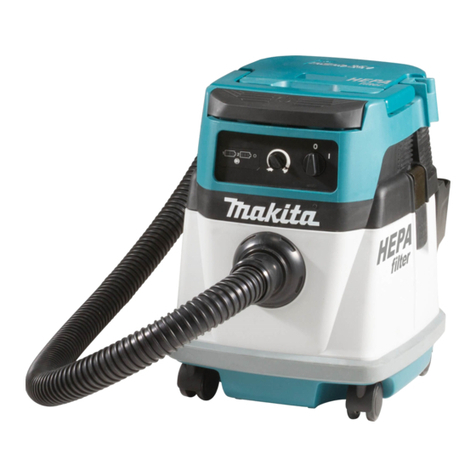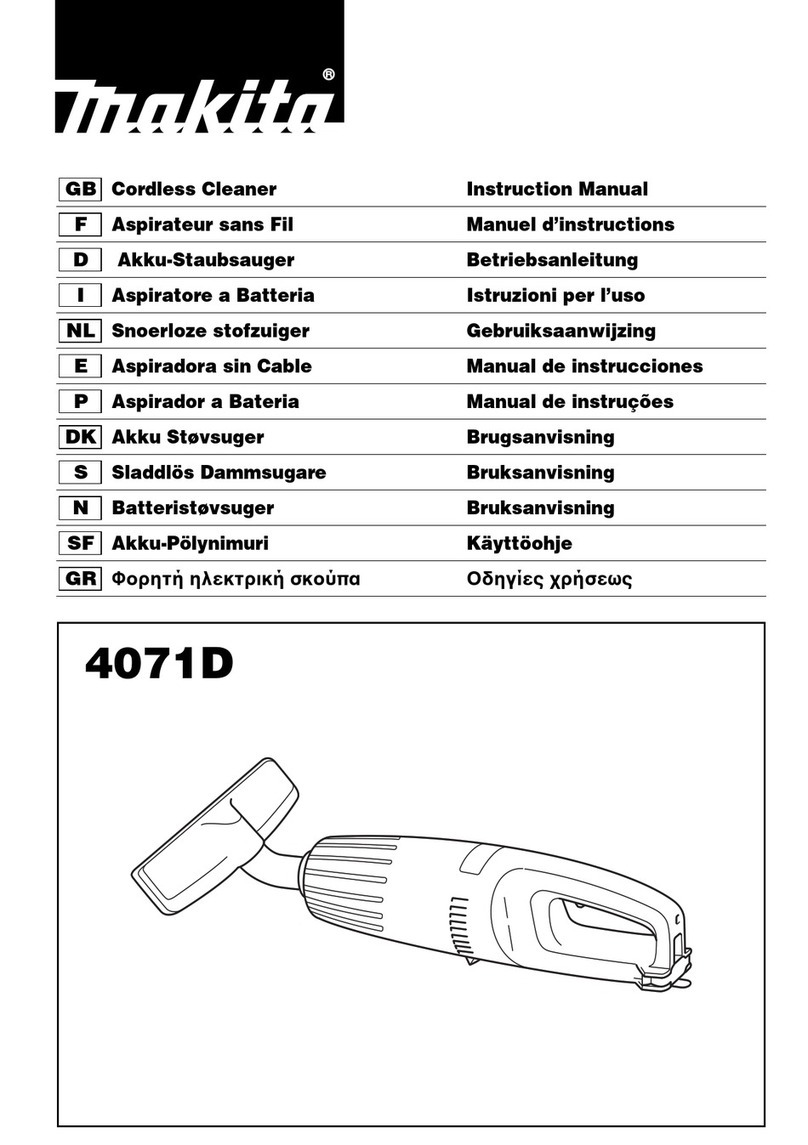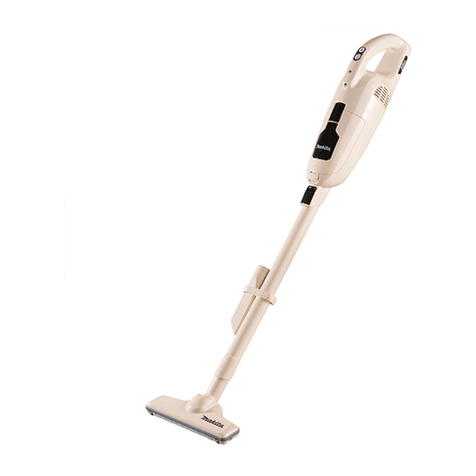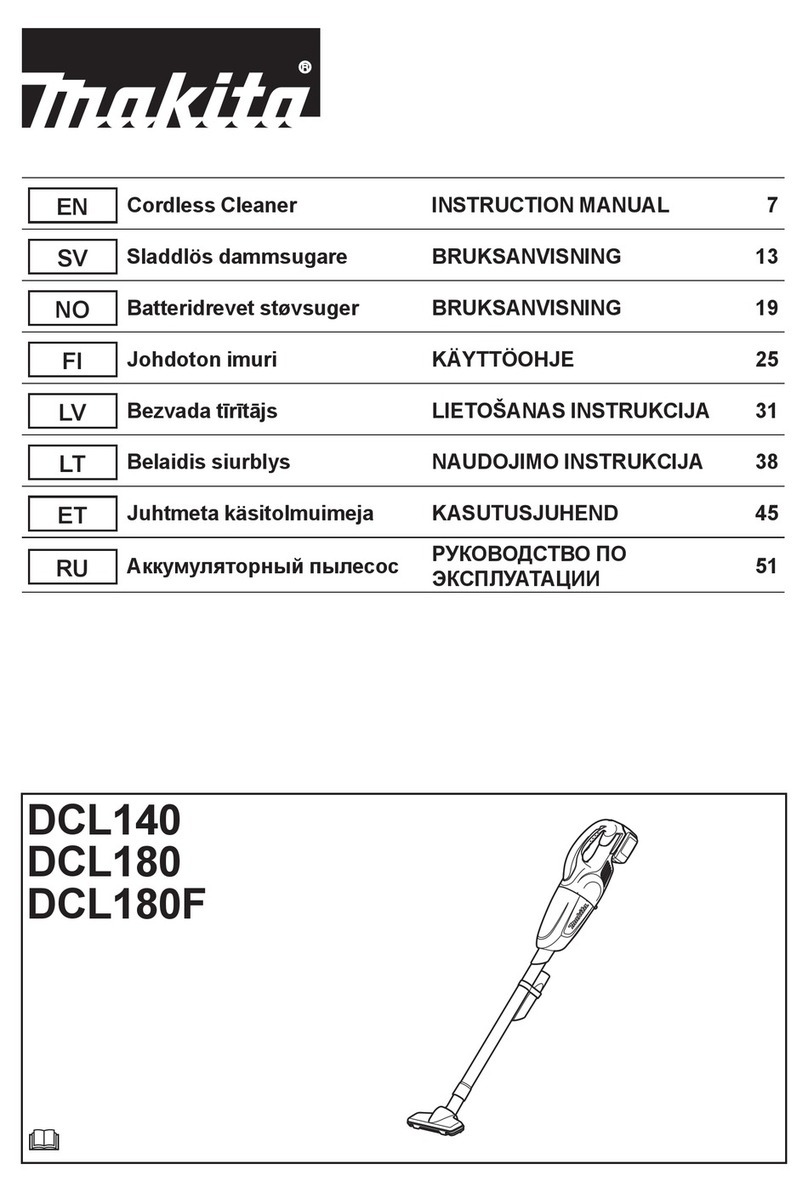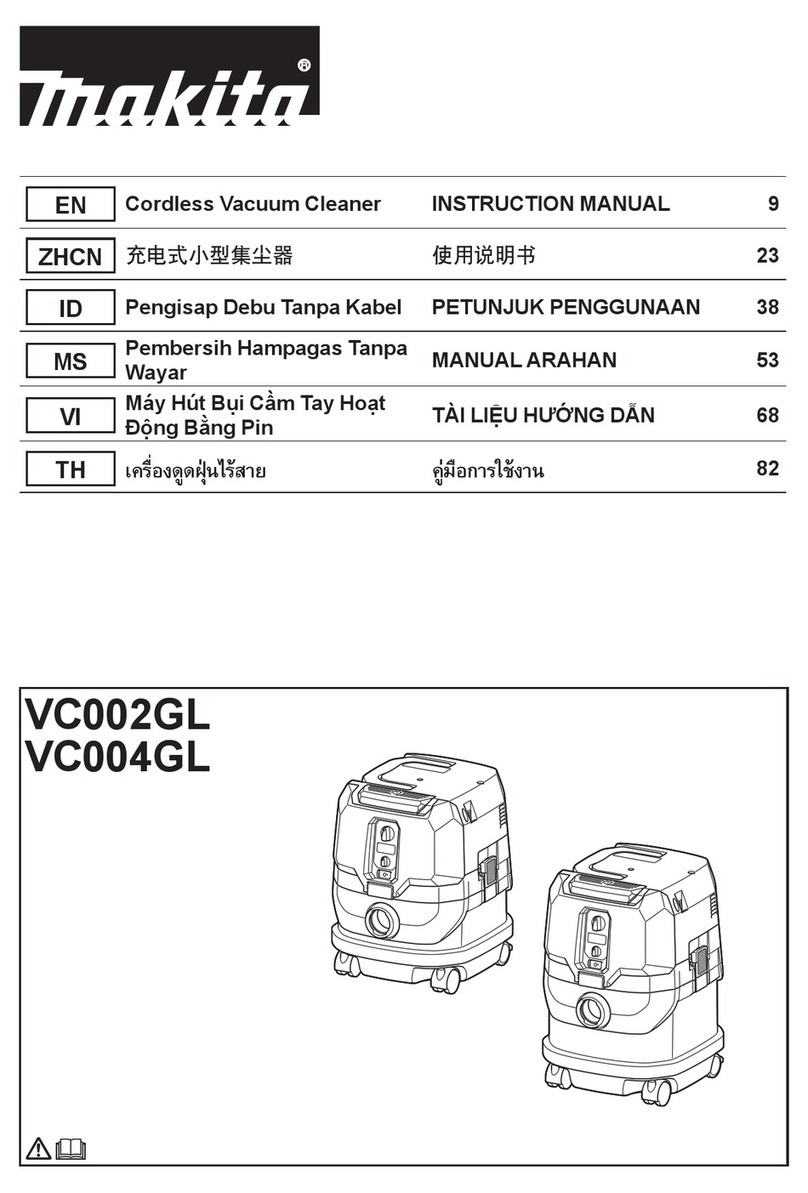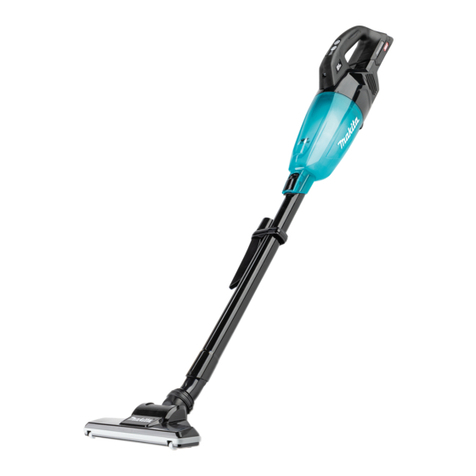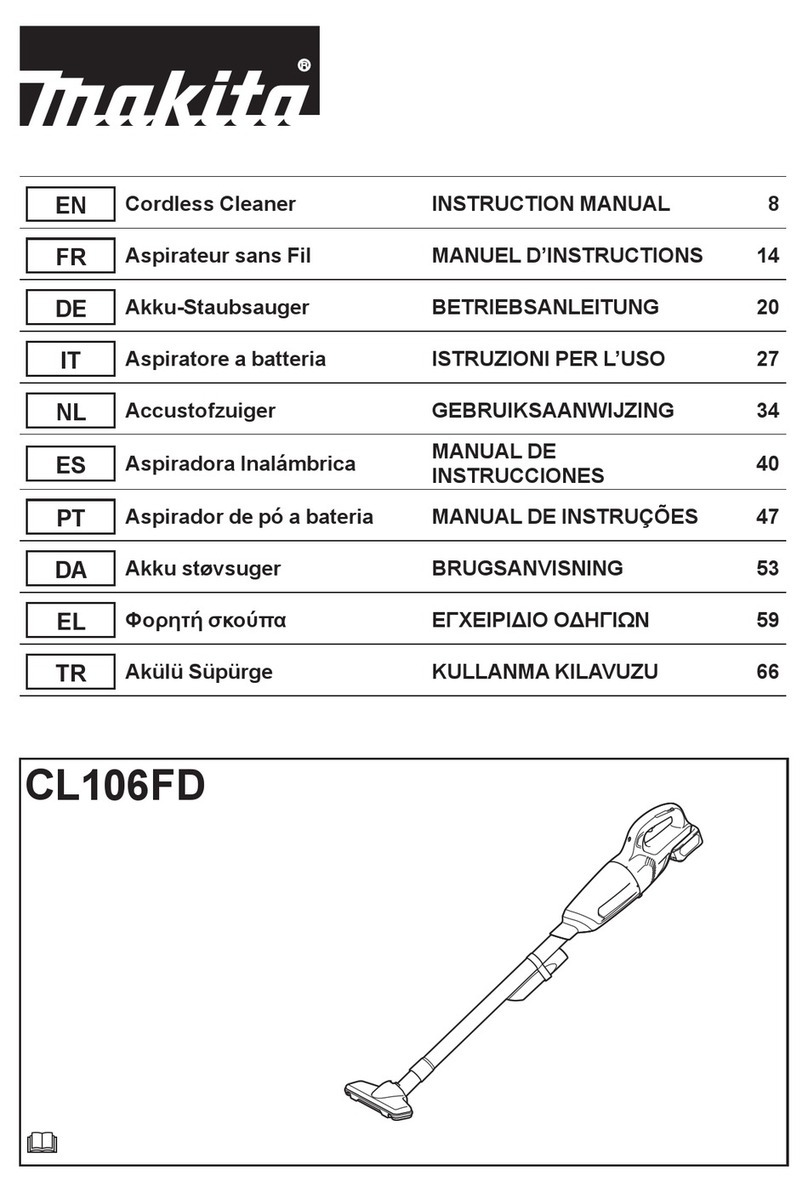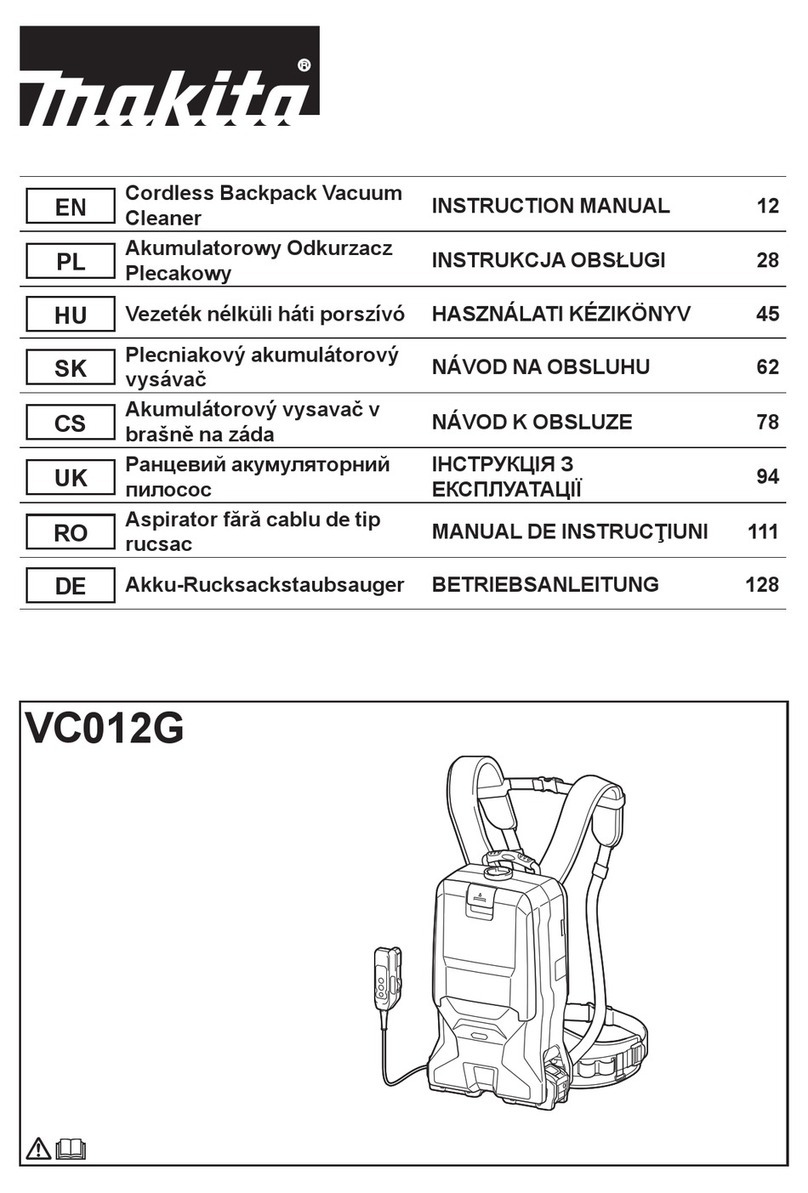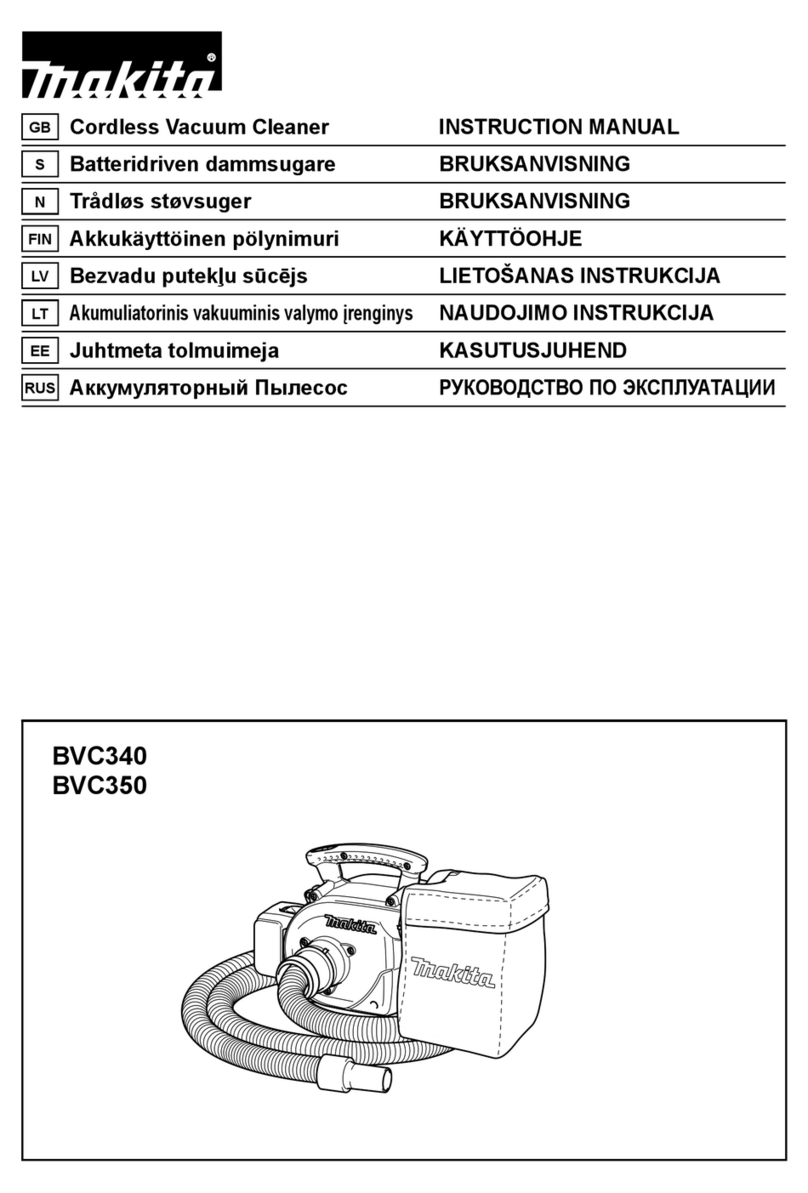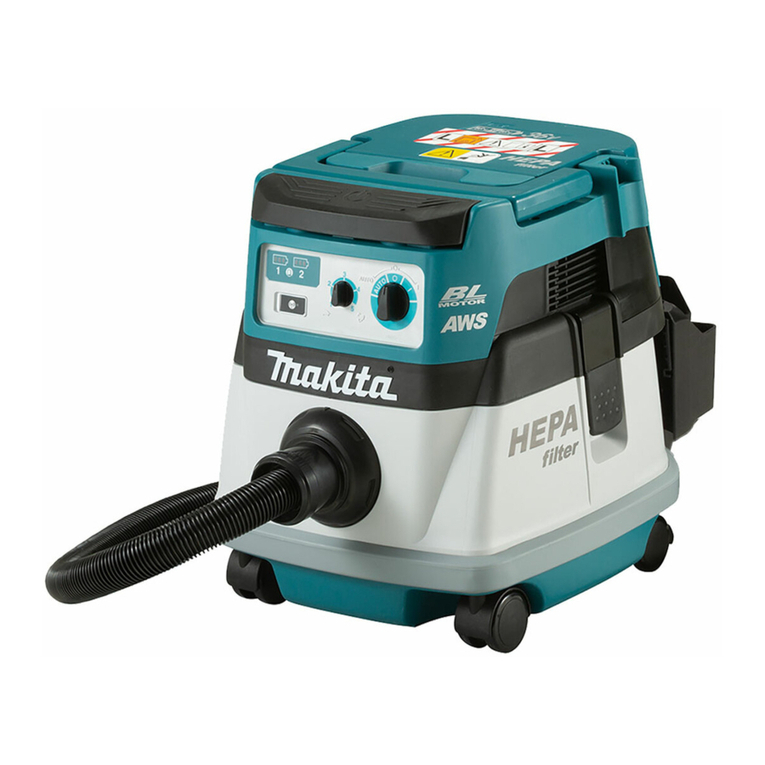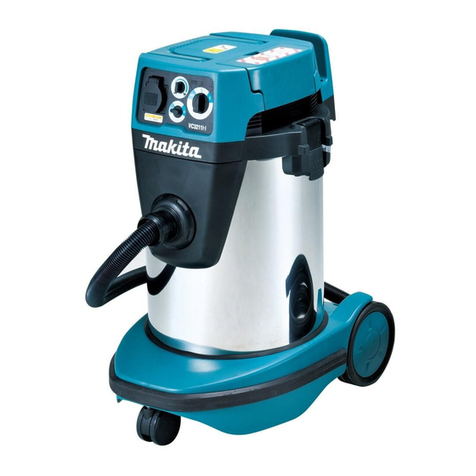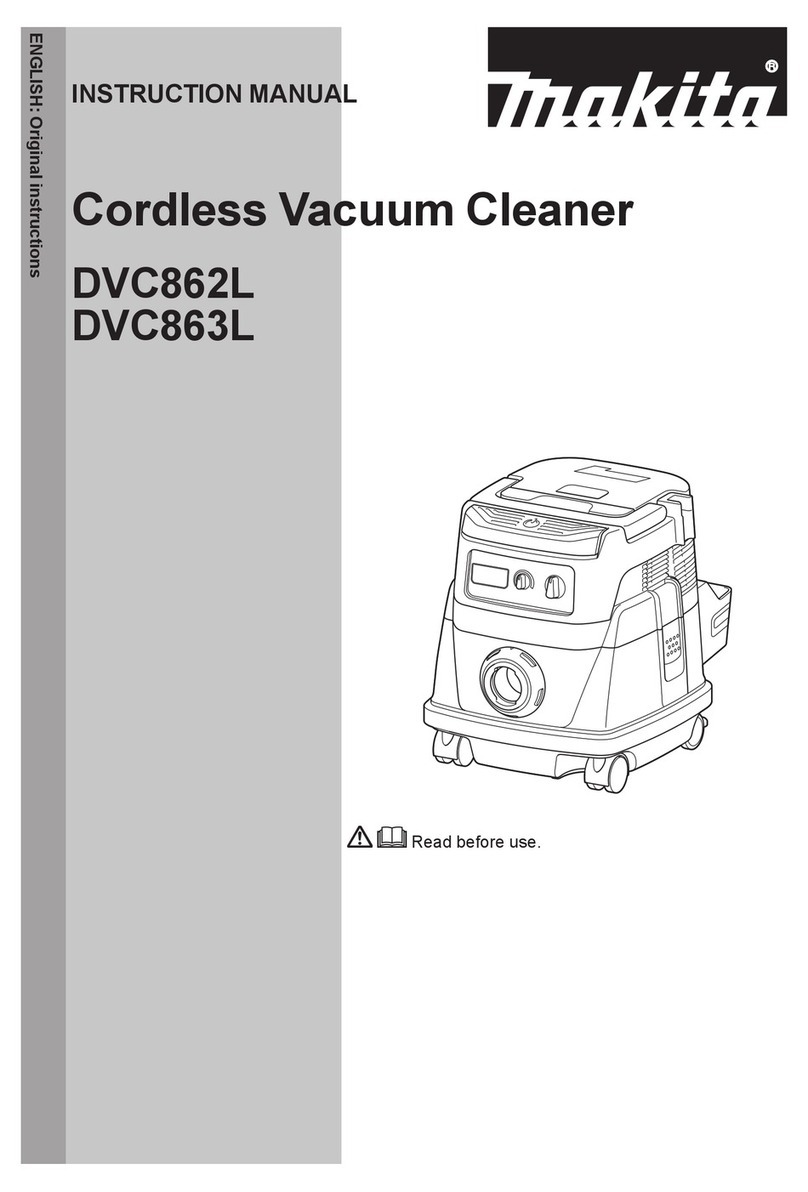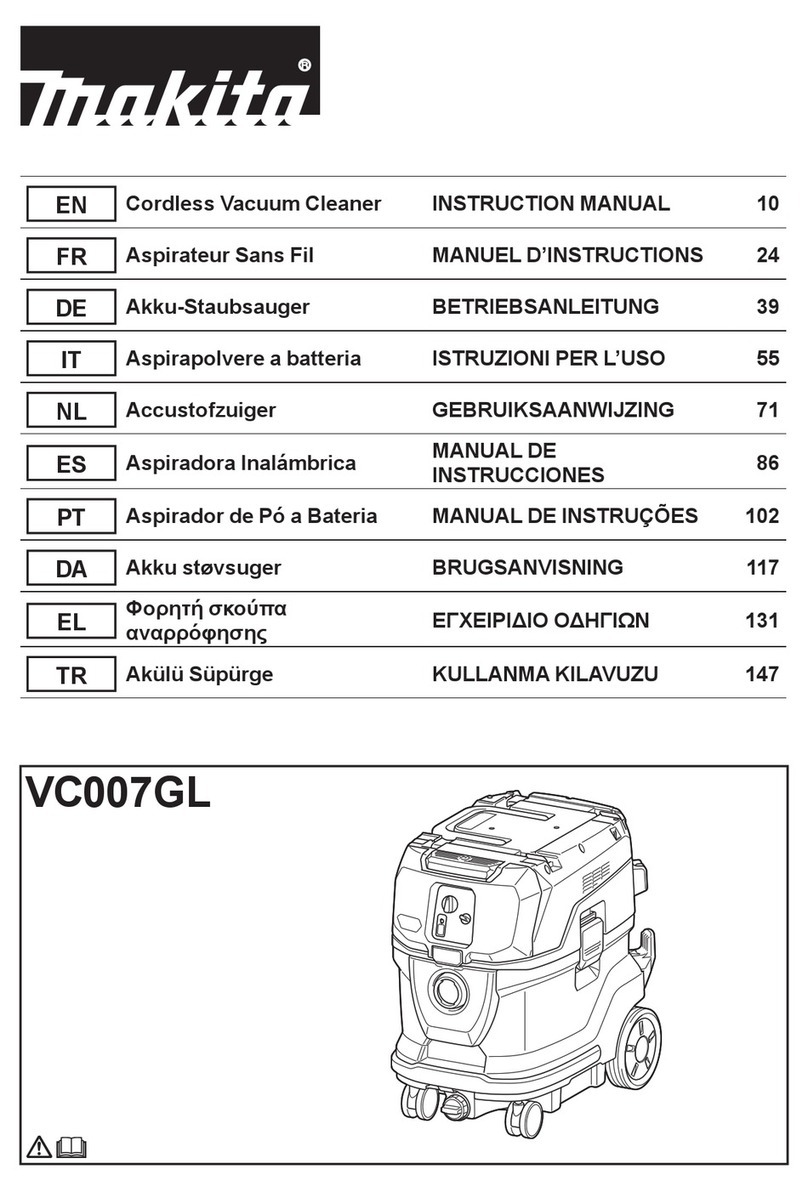
3ENGLISH
Noise
The typical A-weighted noise level determined accord-
ing to EN/IEC60704:
Sound pressure level (LpA) : 72.5 dB (A)
Uncertainty (K) : 2.5 dB (A)
The noise level under working may exceed 80 dB (A).
Wear ear protection
Vibration
The vibration total value (tri-axial vector sum) deter-
mined according to EN/IEC60335:
The vibration emission value is below 2.5 m/s2.
For European countries only
EC Declaration of Conformity
Makita declares that the following Machine(s):
Designation of Machine:
Vacuum Cleaner
Model No./ Type: VC3211H
Conforms to the following European Directives:
2006/42/EC
They are manufactured in accordance with the following
standard or standardized documents:
EN60335
The technical le in accordance with 2006/42/EC is
available from:
Makita, Jan-Baptist Vinkstraat 2, 3070, Belgium
31.7.2014
Yasushi Fukaya
Director
Makita, Jan-Baptist Vinkstraat 2, 3070, Belgium
VACUUM CLEANER SAFETY
WARNINGS
WARNING! IMPORTANT READ CAREFULLY all
safety warnings and all instructions BEFORE USE.
Failure to follow the warnings and instructions may
result in electric shock, re and/or serious injury.
1. Before use, make sure that this cleaner must
be used by people who have been adequately
instructed on the use of this cleaner.
2. Only use the socket outlet on the cleaner for
purposes specied in the instructions.
3. If foam/liquid comes out, switch off
immediately.
4. Clean the water level limiting device regularly
and examine it for signs of damage.
5. Do not use the cleaner without the lter.
Replace a damaged lter immediately.
6. USE OF EXTENSION CORD. When using an
extension cord because of the great distance
to your power source, try to employ a cord that
is sufciently thick but not too long, or cleaner
performance will be adversely affected. For
outdoor applications use an extension cord
suitable for outdoor use.
7. VOLTAGE WARNING: Before connecting the
cleaner to a power source (receptacle, outlet,
etc.) be sure the voltage supplied is the same
as that specied on the nameplate of the
cleaner. A power source with voltage greater
than that specied for the cleaner can result
in SERIOUS INJURY to the operator as well
as damage to the cleaner. If in doubt, DO NOT
PLUG IN THE CLEANER. Using a power source
with voltage less than the nameplate rating is
harmful to the motor.
8. AVOID UNINTENTIONAL STARTING. Be sure
switch is OFF when plugging in.
9. Do not attempt to pick up ammable materials,
re works, lighted cigarettes, hot ashes, hot
metal chips, sharp materials such as razors,
needles, broken glass or the like.
10.
NEVER USE THE CLEANER IN THE VICINITY
OF GASOLINE, GAS, PAINT, ADHESIVES OR
OTHER HIGHLY EXPLOSIVE SUBSTANCES.
The switch emits sparks when turned ON and
OFF. And so does the motor commutator during
operation. A dangerous explosion may result.
11.
After vacuuming up toxic, carcinogenic or patho-
genic, or other hazardous materials such as
asbestos, arsenic, barium, beryllium, lead, pes-
ticides, or other health endangering materials,
bring the machine to authorised institution for
cleaning and disposal of those hazardous dusts
in accordance with your country’s regulation.
12.
Never vacuum up combustible dusts or materials.
13. Never use the cleaner outdoors in the rain.
14. Do not use close to heat sources (stoves, etc.).
15. GUARD AGAINST ELECTRIC SHOCK. Prevent
body contact with grounded surfaces. For
example; pipes, radiators, ranges, refrigerator
enclosures.
16. Do not block cooling vents. These vents per-
mit cooling of the motor. Blockage should be
carefully avoided otherwise the motor will burn
out from lack of ventilation.
17. Keep proper footing and balance at all times.
18. DO NOT ABUSE CORD. Never carry the cleaner
by cord or yank it to disconnect from recepta-
cle. Keep cord away from heat, oil, and sharp
edges. Inspect cleaner cords periodically and
if damaged, have repaired by authorized ser-
vice facility. Inspect extension cords periodi-
cally and replace if damaged.
19. Do not fold, tug or step on the hose.
20. Stop the cleaner immediately if you notice
poor performance or anything abnormal
during operation.
21. DISCONNECT THE CLEANER. When not in
use, before servicing, and when changing
accessories.
22. Clean and service the cleaner immediately
after each use to keep it in tiptop operating
condition.
23. MAINTAIN THE CLEANER WITH CARE. Keep
the cleaner clean for better and safer per-
formance. Follow instructions for changing
accessories. Keep handles dry, clean, and free
from oil and grease.
